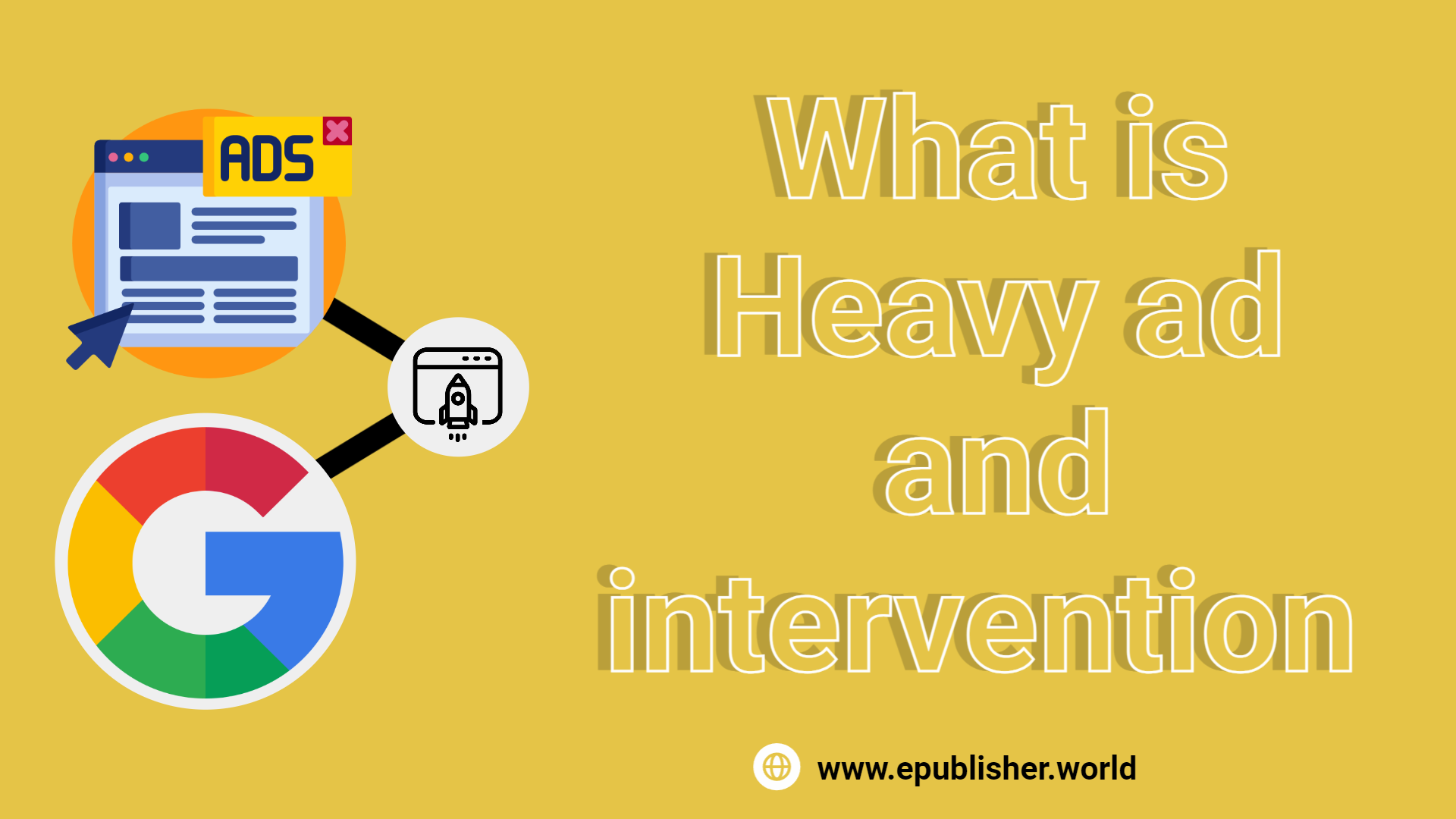
The publisher and ad environments have evolved dramatically in recent years, and Google is constantly updating Chrome. Chrome Heavy Ad Intervention isn’t new, but it may still affect publishers.
The FAQ below defines a “heavy ad” and tells publishers how to avoid poor ad impressions and income.
Two requirements define a hefty ad:
1) No one has used it yet.
2) Any of three conditions:
The ad’s primary thread lasts almost 60 seconds.
The ad’s primary thread lasts more than 15 seconds in a 30-second span.
The ad took more than 4 MB of bandwidth.
Video and rich format advertising are sometimes hefty, however this may be avoided.
Heavy ad intrusion in Chrome.
Chrome limits ad resources. Chrome eliminates noncompliant ads and replaces them with removal notices.
Most don’t make big advertisements. An ad might be inadequately compressed, contain a glitch, or not satisfy lightweight ad and delivery requirements.
Heavy advertising may be malevolent, meant to mine crypto or compel user interactions.
Why does Chrome censor ads?
Tech companies prioritize user experience. Today’s consumers have options. If technology fails, visitors will go elsewhere and tell others.
User-unfriendly ads
Heavy ads drain a device’s resources and provide a poor user experience. They may delay processing, take up data, deplete batteries, and freeze devices.
Ad loading hurts users
Google promotes a positive user experience, thus interfering when advertising cause website suffering fits their principles. A terrible ad experience hurts their bottom line by encouraging adblocking. Adblockers cost Google millions annually.
Publishers hate heavy ads.
Adblockers worry publishers. Bad ad experiences force our audience toward adblocking, causing revenue losses. As we create connections with visitors, we lose their trust.
Your content choices may minimize ad blocker downloads. Others don’t or won’t, impacting everyone.
Chrome’s anti-heavy ad action may be another hurdle. Publishers benefit. It makes industry-harmers follow the regulations.
Google’s Chrome team keeps improving this functionality. It debuted in 2020. It’s Chrome 84 and later.
If an ad works, it will load in the iframe. If the browser doesn’t block the ad, you’ll see “ad deleted.”
Chrome might delete an ad for various reasons, so visit the link to learn why it was removed if the window doesn’t say.
This ad consumes too many resources for your device, therefore Chrome deleted it.
How does Chrome’s ad-blocking affect publishers?
Ad limitations may affect any publication, so don’t worry. Many publishers may already be controlling ad performance and banning heavy advertisements.
Google thinks that.3% of advertisements are heavy, and that number should reduce as marketers become more conscious.
If heavy advertising is only.3% of advertisements, you may ask why Chrome wants to fix this.
According to Chromium study, while being a small fraction of advertising, they take 27% of network traffic and 28% of CPU.
Google’s Chrome and Microsoft Edge are based on Chromium.
How can I check my website for heavy ads?
Ads are online content, thus you may utilize Lighthouse’s Publisher Ads Audit. This tool will give content a score and suggests ways to enhance the visitor’s experience. Checking campaign performance may be suggested.
Test a page’s content using heavy-ads.glitch.me or AdValify. If testing a single website repeatedly, erase your browser history.
Whenever Chrome disables an ad, will I be notified
The reporting API calls interventions “intervention.” A Reporting API post request may inform you. Set the HTTP response’s Reporting-Endpoints header.
Regularly check the report for inaccuracies. In this report, look for irregularities that may indicate ad placement issues.
A visitor may report a problematic ad to you. As part of visitor relationship management and retention, answer immediately and kindly. People who tell you care about your brand, even if their remarks are harsh.
How can publishers avoid ads?
We’re publishing. We’ve lost a lot of income since publishers don’t notice bad ad performance. All publishers should take these actions.
Create an instructional paper if you sell ads directly to advertisers. Chrome may prevent their adverts on your website. Learn what a heavy ad is and how to avoid it.
If you put advertising on another site, make sure they’re 4MB or less. Video and media-rich ads need special attention.
Browse your site. Chrome: /flags/# enable-heavy-ad-intervention enables the intervention. It’s turnable.
Check your report often or engage with a 3rd party business that monitors your advertisements and alerts you to heavy ads on your site or gives self-monitoring advertising effectiveness and earnings.
Google Publisher Console provides audits and insights for Google advertisements. Pagespeed Insights and Web Vitals
